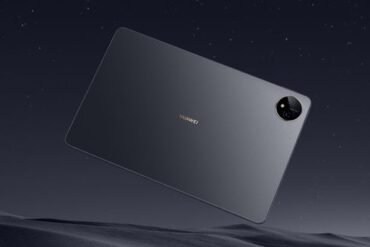Graphics Card Cooling Solutions: Air vs. Liquid
Table of Contents
Introduction: Understanding Graphics Card Cooling
Graphics card cooling is an essential aspect to consider when it comes to the overall performance and longevity of your gaming or graphics-intensive system. As graphics cards become faster and more powerful, they generate a significant amount of heat that needs to be efficiently dissipated to prevent overheating and potential damage. This is where cooling solutions come into play.
There are primarily two types of cooling solutions available for graphics cards: air cooling and liquid cooling. Each has its own advantages and disadvantages, and understanding them can help you make an informed decision when choosing the right cooling solution for your needs.
Air Cooling:
Air cooling is the most common and traditional method of cooling graphics cards. It involves using a combination of heat sinks, fans, and thermal paste to dissipate the heat generated by the graphics card. The heat sinks are usually made of metal and have fins that help in increasing the surface area for better heat dissipation. The fans blow cool air over these heat sinks, removing the heat and keeping the graphics card cool.
Air cooling is relatively straightforward and cost-effective. It is also easier to maintain and install, making it a popular choice among gamers and PC enthusiasts. However, air cooling can sometimes be noisy, especially when the fans operate at higher speeds to keep the temperatures down during heavy gaming sessions. Additionally, air cooling may not be as efficient as liquid cooling when it comes to handling extreme overclocking and high-end graphics cards.
Liquid Cooling:
Liquid cooling, also known as water cooling, is a more advanced and efficient cooling solution for graphics cards. It involves circulating a liquid coolant through a series of tubes or pipes connected to a water block that is mounted on the graphics card. The liquid coolant absorbs the heat from the graphics card and carries it away, where it is then cooled by a radiator and fans before being recirculated.
Liquid cooling offers several advantages over air cooling. It provides better heat dissipation, resulting in lower temperatures and improved overall performance. Liquid cooling systems are also quieter compared to air cooling, as the fans operate at lower speeds. Moreover, liquid cooling can handle extreme overclocking and high-end graphics cards more effectively, making it a preferred choice for hardcore gamers and enthusiasts. However, liquid cooling systems are generally more expensive and require more careful installation and maintenance.
In conclusion, understanding the difference between air cooling and liquid cooling can help you choose the right graphics card cooling solution for your specific requirements. Air cooling is a cost-effective and reliable option for most users, while liquid cooling offers superior performance and efficiency, albeit at a higher cost. Consider your budget, system requirements, and personal preferences before making a decision.
Air Cooling: Efficiency and Performance
Air cooling is the most common and traditional method of cooling graphics cards. It involves the use of fans and heatsinks to dissipate heat generated by the GPU. While it may not be as flashy as liquid cooling, air cooling has several advantages that make it a popular choice among gamers and PC enthusiasts.
1. Cost-effective: Air cooling solutions are generally more affordable compared to liquid cooling options. They come pre-installed with most graphics cards, eliminating the need for additional purchases or installations.
2. Easy maintenance: Air coolers are relatively easy to maintain. They do not require refilling or regular maintenance like liquid cooling systems. Dust accumulation is the primary concern, but this can be easily addressed by periodic cleaning.
3. Wide compatibility: Air cooling solutions are compatible with a wide range of graphics card models and sizes. They typically come with a universal mounting mechanism that can be easily adjusted to fit different cards.
4. Effective cooling performance: While liquid cooling may provide slightly better cooling performance in certain scenarios, air cooling is generally sufficient to keep most graphics cards within safe temperature limits. With efficient heat dissipation, air coolers can effectively prevent overheating and maintain stable performance.
5. Noise levels: Noise can be a concern when it comes to cooling solutions. Air coolers, although not silent, are generally quieter compared to liquid cooling systems. Fans can be set to run at lower speeds, resulting in reduced noise levels while still providing adequate cooling.
It is important to note that the efficiency and performance of air cooling can vary based on factors such as fan design, heatsink quality, and case airflow. High-quality air coolers with larger heatsinks and multiple fans tend to provide better cooling performance compared to basic stock coolers.
In conclusion, air cooling solutions offer a cost-effective and reliable method of cooling graphics cards. While liquid cooling may have its advantages, air cooling remains a popular choice due to its affordability, ease of maintenance, wide compatibility, effective cooling performance, and relatively lower noise levels.
Liquid Cooling: Enhanced Cooling Solutions
Liquid cooling, also known as water cooling, is an advanced cooling solution that offers several benefits over traditional air cooling methods. It involves using a liquid coolant to transfer heat away from the graphics card, resulting in enhanced cooling performance and improved overall system stability.
Here are some key advantages of liquid cooling for graphics cards:
- Improved Heat Dissipation: Liquid cooling systems are highly efficient at dissipating heat, as liquid has a higher thermal conductivity compared to air. This allows for better heat transfer from the graphics card to the cooling system, preventing overheating and potential performance throttling.
- Reduced Noise Levels: Liquid cooling solutions operate at lower noise levels compared to air coolers. This is because liquid cooling systems utilize larger radiators and fans that can spin at lower speeds while still effectively cooling the graphics card. As a result, you can enjoy a quieter gaming or computing experience.
- Enhanced Overclocking Potential: Liquid cooling is highly effective at dissipating heat, making it an ideal solution for users who want to push their graphics card to its limits through overclocking. By keeping the GPU temperatures at bay, liquid cooling allows for higher stable clock speeds, increasing the performance potential of the graphics card.
- Compact and Clean Design: Liquid cooling solutions often feature compact designs that require less space inside the computer case compared to bulky air coolers. This allows for better airflow and easier cable management. Additionally, liquid cooling eliminates the need for large heatsinks and fans, resulting in a cleaner and sleeker overall aesthetic.
It’s important to note that liquid cooling systems require proper installation and maintenance to ensure optimal performance. This includes regular cleaning of the radiator and checking for any leaks or blockages in the system. Additionally, liquid cooling can be more expensive compared to air cooling solutions, as it involves additional components such as a pump, reservoir, and tubing.
In conclusion, liquid cooling provides enhanced cooling solutions for graphics cards, offering improved heat dissipation, reduced noise levels, enhanced overclocking potential, and a compact design. It is a great option for users who prioritize performance, stability, and aesthetics in their gaming or computing setups.
Pros and Cons: Comparing Air and Liquid Cooling
When it comes to cooling your graphics card, you have two primary options: air cooling and liquid cooling. Each method has its own set of advantages and disadvantages. Let’s take a closer look at the pros and cons of each:
Air Cooling:
- Pros:
- Cost-effective: Air cooling solutions are generally more affordable compared to liquid cooling setups.
- Easy to install: Air coolers are typically easier to install and require less maintenance.
- Widespread compatibility: Air cooling solutions are compatible with a wide range of graphics cards, making them a versatile option.
- Reliable performance: Air coolers can provide efficient cooling for most graphics cards, ensuring stable performance during intensive tasks.
- Cons:
- Limited cooling potential: Air coolers may struggle to keep temperatures low under extreme overclocking or heavy load conditions.
- Potential noise: Some air coolers can generate noticeable fan noise, especially under heavy loads.
- Bulky size: Air cooling solutions can be quite large, which may limit compatibility with smaller PC cases.
Liquid Cooling:
- Pros:
- Superior cooling performance: Liquid cooling systems can often provide more efficient cooling compared to air coolers, especially for high-end graphics cards.
- Reduced noise levels: Liquid cooling solutions tend to be quieter, as they don’t rely on fans for heat dissipation.
- Improved overclocking potential: Liquid cooling can help achieve higher overclocking speeds, resulting in better overall performance.
- Sleek aesthetics: Liquid cooling setups can give your PC a clean and professional look.
- Cons:
- Higher cost: Liquid cooling solutions are generally more expensive than air coolers, especially when considering additional components like pumps and radiators.
- Complex installation: Setting up a liquid cooling system can be more challenging and time-consuming, requiring careful planning and maintenance.
- Potential for leaks: There is a small risk of leaks with liquid cooling systems, which could damage other components if not properly maintained.
Ultimately, the choice between air and liquid cooling depends on your specific needs and preferences. If you’re on a budget or don’t plan on extreme overclocking, air cooling can be a reliable and cost-effective option. On the other hand, if you’re seeking maximum performance, quieter operation, and an aesthetically pleasing setup, liquid cooling may be worth the investment.
Conclusion: Choosing the Ideal Cooling Solution
When it comes to choosing the ideal cooling solution for your graphics card, there are several factors to consider. Both air and liquid cooling have their advantages and disadvantages, and the right choice ultimately depends on your specific needs and preferences.
Air cooling is the more traditional and widely-used method. It is generally more affordable and easier to install compared to liquid cooling. Air coolers consist of heat sinks and fans that help dissipate heat from the graphics card. They are also known for their reliability and low maintenance requirements. Additionally, air cooling solutions are often more compatible with a wider range of graphics card models.
On the other hand, liquid cooling offers superior thermal performance. Liquid coolers use a combination of water or coolant and radiators to cool down the graphics card. This allows for more efficient heat dissipation, resulting in lower temperatures and potentially better overclocking capabilities. Liquid cooling systems also tend to be quieter than air coolers due to the absence of direct fan contact with the components.
However, liquid cooling systems can be more expensive and complex to set up. They require additional components such as water blocks, pumps, and tubing, which can increase the overall cost of your cooling solution. Maintenance can also be more demanding, as periodic checks and refills may be necessary to ensure optimal performance.
In conclusion, if you are on a tight budget or prefer a hassle-free and reliable cooling solution, air cooling is likely the best choice for you. It provides adequate cooling performance while being more affordable and easier to maintain. On the other hand, if you are an enthusiast looking for top-tier thermal performance and are willing to invest in a more complex and expensive cooling system, liquid cooling is the way to go.
- Air cooling is affordable, easy to install, and reliable.
- Liquid cooling offers superior thermal performance and quieter operation.
- Air cooling is more compatible with a wider range of graphics card models.
- Liquid cooling is more expensive and requires additional components.
- Air cooling is ideal for budget-conscious users, while liquid cooling is suitable for enthusiasts seeking optimal performance.



























